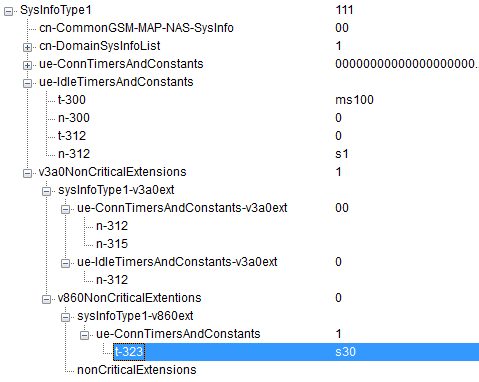|
3G/UMTS |
|||||||||||||||||||||||||||||||||||||||||||||||||||||||
|
Fast Dormancy
If you have any experience on UMTS protocol, you may have noticed two properties as listed below.
Of course, this property would impose a lot of restriction for normal operations. So they introduced some additional mechanism to compensate this property.
The compensation mechanism for Property 1 is Paging. With Paging, Network can trigger UE to initiate RRC Connection Request. This compensation mechanism has been provided since day 1 of UMTS deployment. However, it has not been long since we got the compensation mechanism for Property 2. What is the compensation mechanism for property 2 ? It is SCRI (Signaling Connection Release Indicator) message. SCRI is a mechanism for UE to tell Network to initiate RRC Release. and this SCRI is the key component of 'Fast Dormancy'.
Then what is 'Fast Dormancy' ? Simply put, it is a mechanism for UE to let Network initiate RRC Release without tearing down existing PDP Context.
What is the motivation for this ? Major motivation is to reduce the signaling time to recover the data connection which has been established before.
How this kind of Fast Dormancy can reduce the signaling time for recover the data connection ? Normally it would take much longer time to go through NAS layer signaling and IP related bearer setup comparing to RRC layer signaling. So if you have to tear down everything (RRC + NAS) when you release and reestablish everything (RRC + NAS) when you recover the connection, it would take long time. But if you just tear down RRC layer with keeping NAS layer (PDP) as it is, you can recover PDP connection much faster when you need.
Then why do they want to reduce the signaling traffic time ? What is the motivation for this ? There can be different motivation for Network and UE side.
The Network side motivation may be i) reduce network overhead for exchanging signaling message with UE ii) tearing down unused 'RRC Session' mean it can recall unused Scrambling code (OVSF code) and allocate it for another UE. UE side motivation may be i) it can reduce energy consumption by getting into idle or dormant mode when there is no data transaction.
It has been several years since this Fast Dormancy started being used (meaning it is not brand new. It has been used since R99 period), but lately (in Release 8) this mechanism has been improved even further.
Conventional Fast Dormancy
Following is the general signal flow for Fast Dormancy that has been used since R99. (According to GSMA Fast Dormancy Best Practice document, this method is called "Autonomous Signaling Connection Release", but as far as I recall we called this Fast Dormancy in the industry from the beginning)
Release 8 Fast Dormancy
Following is the general signal flow for Fast Dormancy that has been improved in Release 8. (Even though the concept is officially introduced in Release 8, the term 'Fast Dormany' is not a official 3GPP term. It is the term used by the organization (Research In Motion Limited, AT&T, Huawei, Vodafone, NTT DOCOMO) who suggested the concept in RAN2. But again this terminology is more widely used in industry and GSMA is using this term in some of documents linked below).
According to GSMA Fast Dormancy Best Practice Document, If timer T323 is broadcase in System Information Block type1, it means that the network supports this Rel-8 mechanism. This timer can take values : (0,5,10,20,30,60,90,120) seconds. The use of 0 secs indicates no need to apply the inhibit timer. Inhibit timer is started after a FD(Fast Dormancy) Request is sent, and until the timer is elapsed, UE can't send any further FD Request. If T323 = 120, the UE can't send any FD request before 2 minutes after a transmission ends or the transmission of a previous FD request.
Reference :
|
|||||||||||||||||||||||||||||||||||||||||||||||||||||||
